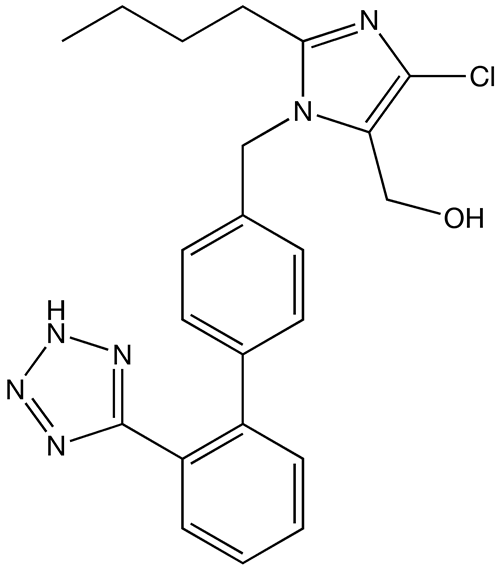Playlist
Show Playlist
Hide Playlist
Collecting Duct (CD): Role of Aldosterone
-
Slides CD Pathophysiology RenalPathology.pdf
-
Reference List Pathology.pdf
-
Download Lecture Overview
00:01 You go into further detail here , make sure we set all this up. This is specific with the principal cell of the collecting duct and effect of aldosterone. Once again we have the blood at the bottom, which means the basolateral membrane aldosterone may stimulate that. 00:18 On the luminal membrane, you will notice a sodium channel. The urine you see would be the lumen. 00:23 So reabsorption will be which way please? Top to bottom or bottom to top. I am just giving it every perspective. Reabsorption would be from top to bottom, correct. Next, there is the intercalated cell. So what kind of substances might you be thinking about here? Hydrogen. You pay attention to hydrogen in this picture. Intercalated. How do you form hydrogen now? The reason I love this picture is because why I assume that you knew that hydrogen and bicarb always are going to run through that formula. You are seeing that over and over again right. Now, what is also important here? Bicarb produced. 01:07 So differences to the following. If you are not following what I am saying, it's okay. Listen. 01:13 In the proximal convoluted tubule, go way back proximal. In the proximal convoluted tubule, tell me please about that bicarb. Was it newly synthetized or was majority of it was reabsorbed? Majority of it was reabsorbed. 80%. Here if its bicarb that is required in the distal convoluted tubule, then understand this is newly synthesized bicarb. Now ultimately with aldosterone, hydrogen is then going to be pushed out and bicarb is then going to be reabsorbed inducing metabolic alkalosis. Aldosterone, lets talk about spironolactone. 01:55 This is one in which we call this as being a aldosterone receptor antagonist in the situation in which if your blocker affects of aldosterone, what are you going to do? You are not going to get rid of potassium. You are going to spare it. You are not going to get rid of your hydrogen. You are going to keep it and may result in decreased pH. What about ACE? ACE inhibitors inhibit angiotensin converting enzyme and never form angiotensin II. Stop there. That angiotensin II which is a huge vasoconstrictor, which would if present and causes arterial vasoconstriction would contribute to what? Afterload. If you give an ACE inhibitor, you remove angiotensin II, listen, then you relieve the arterial vasoconstriction resulting in decreased afterload, point number 1. Point number 2, ACE inhibitor, when would you even think about giving ACE inhibitor? What about that patient in which you want to decrease mortality? After having a congestive heart failure event. It's a good drug, isn't it? Because it decreases afterload by inhibiting angiotensin II? How does it decrease preload more so? Well, what about aldosterone? If you can't form the angiotensin II how in the world you are going to produce your aldosterone from the glomerulus of the adrenal cortex. You cannot right. So if you don't have aldosterone, tell me about preload. It is decreased. Important treatment for what? CHF. Because it decreases preload, it decreases the afterload. It's great because it decreases angiotensin II subsequently aldosterone. We have talked about angiotensin II and its effect on arterial vasoconstriction. Here we go. We remove the angiotensin II to decrease the afterload. 03:46 Aldosterone if present increases preload, if inhibited, what do you do? You inhibit the preload.
About the Lecture
The lecture Collecting Duct (CD): Role of Aldosterone by Carlo Raj, MD is from the course Diseases of the Nephron.
Included Quiz Questions
Which of the following is true about the mechanism of action of spironolactone?
- Results in hyponatremia, hyperkalemia, and metabolic acidosis.
- Results in hypernatremia, hyperkalemia, and metabolic acidosis.
- Results in hyponatremia, hypokalemia, and metabolic acidosis.
- Results in hypernatremia, hypokalemia, and metabolic acidosis.
- Results in hyponatremia, hyperkalemia, and metabolic alkalosis.
Which of the following effects would an angiotensin-converting enzyme (ACE) inhibitor have on preload and afterload and how?
- Decreased afterload (decreased angiotensin II), decreased preload (decreased aldosterone)
- Increased afterload (Increased angiotensin II), decreased preload (decreased aldosterone)
- Decreased afterload (decreased angiotensin II), increased preload (increased aldosterone)
- Decreased afterload (decreased angiotensin II), unchanged preload (unchanged aldosterone)
- Unchanged afterload (unchanged angiotensin II), decreased preload (decreased aldosterone)
Which of the following changes would you expect to find in a patient taking a potassium-sparing diuretic?
- Elevated urine pH
- Hypokalemia
- Respiratory acidosis
- Hypernatremia
- Metabolic alkalosis
Customer reviews
5,0 of 5 stars
| 5 Stars |
|
5 |
| 4 Stars |
|
0 |
| 3 Stars |
|
0 |
| 2 Stars |
|
0 |
| 1 Star |
|
0 |





